Which of the Canary Islands is perfect for you?
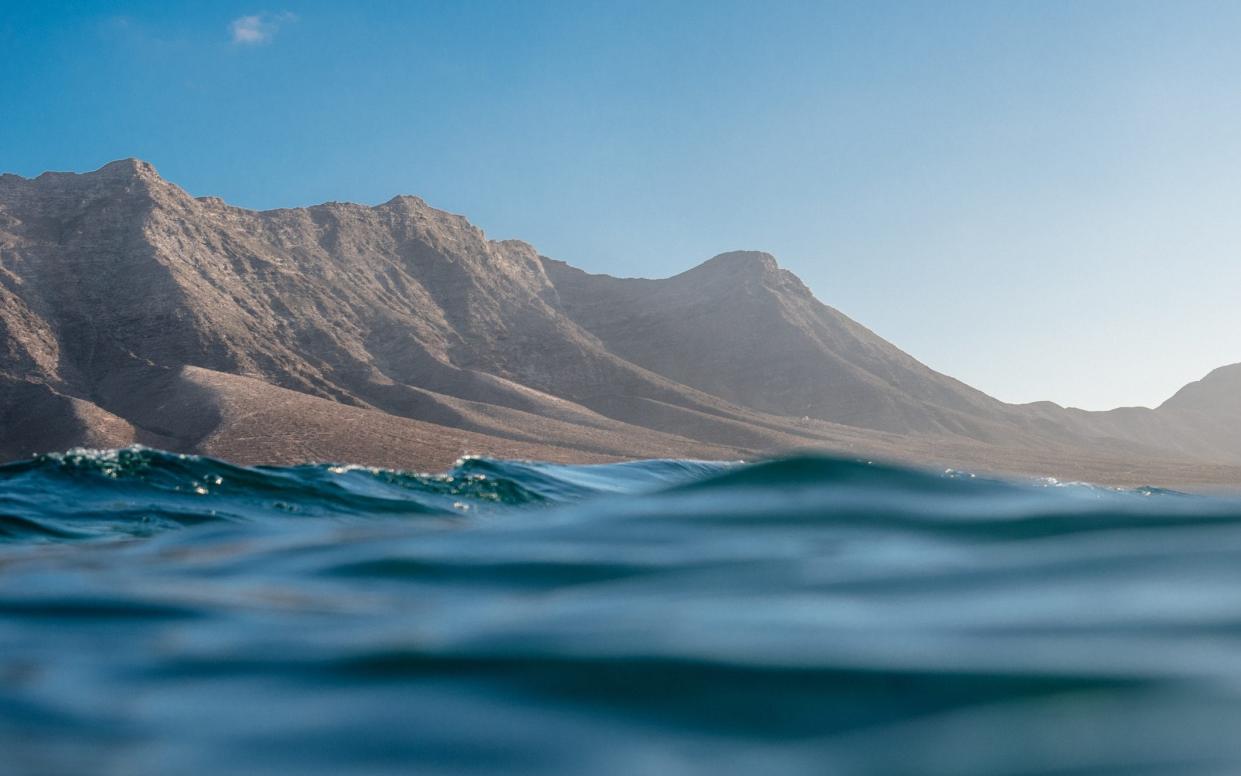
Everything about the sun-soaked Canary Islands, which could be added to the UK's 'green' list from May 17 thanks to its low Covid rates and effective vaccine programme, always seems to feel bigger and brighter.
I’ve paid the Spanish islands a visit at least once a year since I was a teenager, and the enormity of the place always strikes me, whether that is while gazing up at the pineapple-top foliage of the palm trees around the hotel pool, gawping at the human-dwarfing size of the rainforest’s evergreen ferns, or running, grinning, down the dunes, my heels spraying golden sand in my wake.
I’ve risen before dawn to climb Mount Teide at Tenerife’s volcanic heart, and watched the sky turn candyfloss pink and then brightest cerulean at the start of yet another sunny winter’s day. I’ve taken off above pounding waves on a kitesurfing lesson, snorkelled with vast shoals of shiny, darting fish, and romped across jet-black lava fields and through endless pine forests. Yes, there are brash resorts, but these are confined to a couple of strips of overdeveloped land, making them easy to avoid in favour of an empty sandy beach or one of the islands few non-Canarios have even heard of.
Because that’s the other thing about the Canaries: they are plural. This is an archipelago of eight, each island with its own unique landscape. In the west, lushness prevails, with subtropical rainforests filling volcanic calderas and topping plunging cliffs. Further east, closer to Africa, a drier, flatter lavascape sees sand blown in from the Sahara, and exposed volcanic cones that resemble neat piles of ginger, cinnamon and cumin. The Atlantic surrounds you wherever you go.
Their inclusion on the 'green' list of the traffic light system would mean there would be no need to quarantine on return to the UK, although on entry it will likely be necessary to provide evidence of a negative Covid-19 test taken within the previous 72 hours. Visitors also need to download the local Radar Covid app. In the general scheme of things, these are not onerous requirements, and with average rainfall in May tickling zero, the Canaries are a great option for an early summer getaway. But which island is the the right one for you? Here are a few pointers...
Best for family fun: Tenerife
Tenerife is the best-known Canary for a reason, dwarfing its neighbours with its sky-piercing volcano and glitzy attractions. Towering Teide volcano is a 12,198ft active peak that is snow-capped in winter. The summit is best reached via cable car (€27/£24 return) and you won’t forget the eye-popping Atlantic views – or the nostril-tingling sulphur plumes – in a hurry. Tenerife’s best family day out can be found at Loro Parque (loroparque.com), home to the world’s most diverse population of parrots, as well as penguins, gorillas and lions (guided tours €100pp including lunch). There are also glorious sandy beaches for sandcastle-building and parent-burying along the Costa Adeje and at Playa de las Teresitas.
Stay: The hip Hard Rock Hotel Tenerife (0800 021 1256), with its family-friendly pools, kids clubs and rooftop bar, has rooms from £95 including breakfast. Read our complete guide to the best hotels in Tenerife.
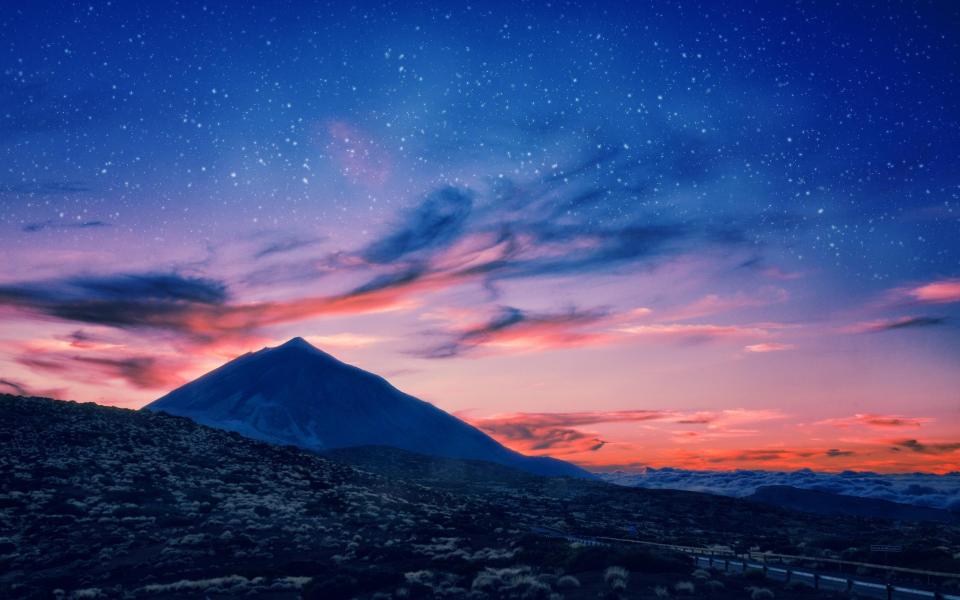
Best for island hopping: La Gomera
The Canaries were made for island hopping, with ferries criss-crossing them. The easiest two to combine are Tenerife and La Gomera, linked by a 50-minute cruise across some of Europe’s best whale-watching waters (from €17.20 return; navieraarmas.com). From here you can spot bottlenose dolphins and pilot whales, before heading up through La Gomera’s lush valleys to the ancient laurel forest of Garajonay, with its abundant hiking trails, and the pretty beaches of Valle Gran Rey. Don’t miss the boat trip out to Los Órganos, an incredible cliffside curtain of basalt columns (€40; speedy-gomera.com).
Stay: Parador Conde de la Gomera (0034 913 742 500) offers clifftop rooms from £82 per night. Enjoy the view out towards Tenerife and the sunset-facing pool.
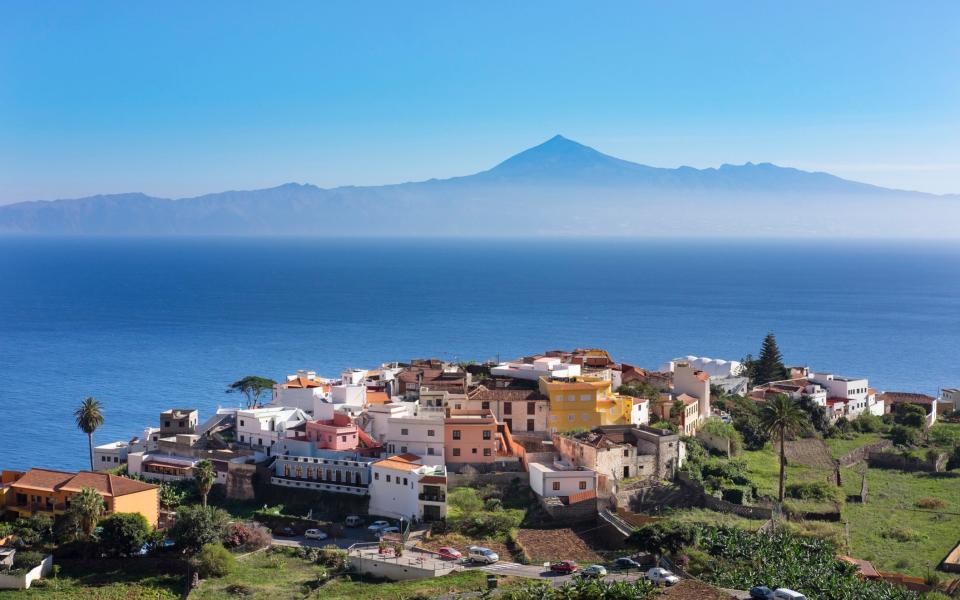
Best for first-timers: Gran Canaria
First visit? Compact Gran Canaria has a dash of everything: vast sand dunes, twisted volcanic rock formations, leafy forests and even a town set in a series of ancient caves. The people of Artenara have been cave-dwellers for centuries – and many still are. The new museum (artenara.es) may just sell you on their eco-conscious lifestyle. Also found in the island’s central mountains is Tejeda, a charming hilltop village surrounded by walking routes, and the volcanic thumb of Roque Nublo, once a place of worship for the aboriginal Guanches. The island’s south is sun-soaked and boasts Gran Canaria’s best beaches, including the shifting golden peaks of the Maspalomas dunes. You won’t have to walk far to shake off the crowds – or your clothes (it is nudist-friendly).
Stay: The retro-chic Seaside Palm Beach (0034 928 721 032) offers dune-view rooms and a pool surrounded by palms from £200, including breakfast. Read our complete guide to the best hotels in Gran Canaria.
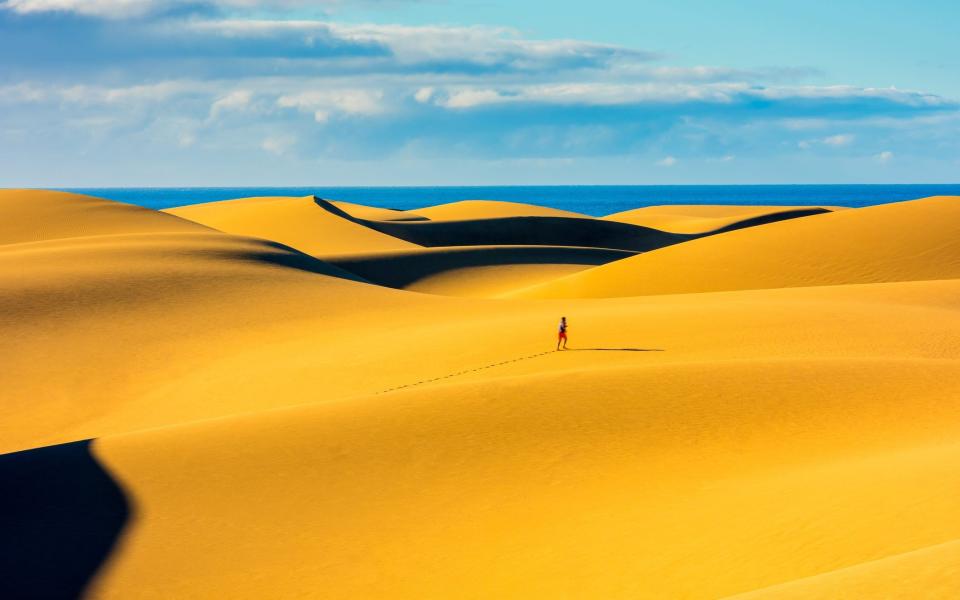
Best for sand and surf: Fuerteventura
For surfing, Fuerteventura blows the other Canary Islands out of the water, with its strong winds, lava reef breaks and lengthy sand beaches. A dirt road known as the North Track sees a steady stream of surfboard-topped camper vans and wetsuit-clad water babies seeking out the best of the waves between the towns of El Cotillo and Corralejo, both of which have numerous surf schools. To the south, Fuerteventura seems to turn entirely to sand, promising endless powdery beaches stretching out into shallow turquoise waters. These are ideal conditions for windsurfing, or for scuba diving on Jandia reef. Here, you can chase trumpet fish, moray eels and groupers, and spot angel sharks and stingrays (guided dives from €46; diveprofuerte.com).
Stay: Gran Hotel Bahía Real (0034 971 929 364), just outside Corralejo, has beach-view rooms and a chic ocean-front lounge bar. From £250, including breakfast. Read our complete guide to the best hotels in Fuerteventura.
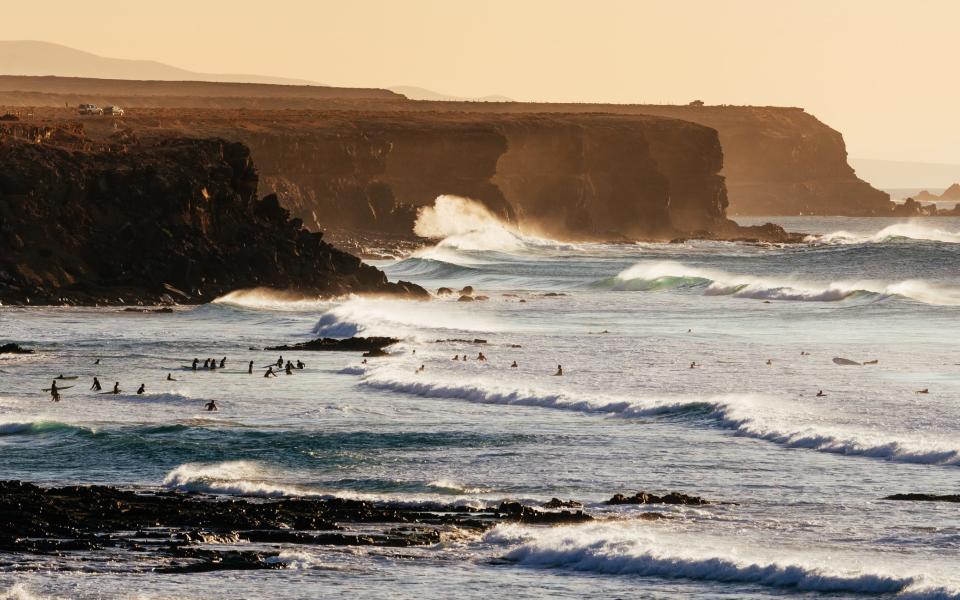
Best for a stylish break: Lanzarote
“Lanzagrotty” is no more – the chicest of the islands has shaken off its down-at-heel reputation and emerged as the Canary of choice for the hipster crowd. Island-born architect César Manrique is largely responsible for Lanzarote’s harmonious aesthetic, having designed many of the sugar-cube casas scattered across its ebony lavascape, as well as many of the public buildings. Check out his Jameos del Agua, a volcanic tube turned café and concert venue, and the Jardín de Cactus, where the sculptural plants fill an ancient quarry (cactlanzarote.com). Lanzarote also produces the islands’ best wines from the small, friendly bodegas dotted around the interior. Bodega La Geria (lageria.com) and Bodegas Rubicón (bodegasrubicon.com) stand opposite each other, surrounded by vines and lava peaks. Both offer laidback tastings.
Stay: Manrique-style rural retreat Finca Malvasia (0034 692 155 981) has five chic self-catering apartments clustered around a small pool. Read our complete guide to the best hotels in Lanzarote.
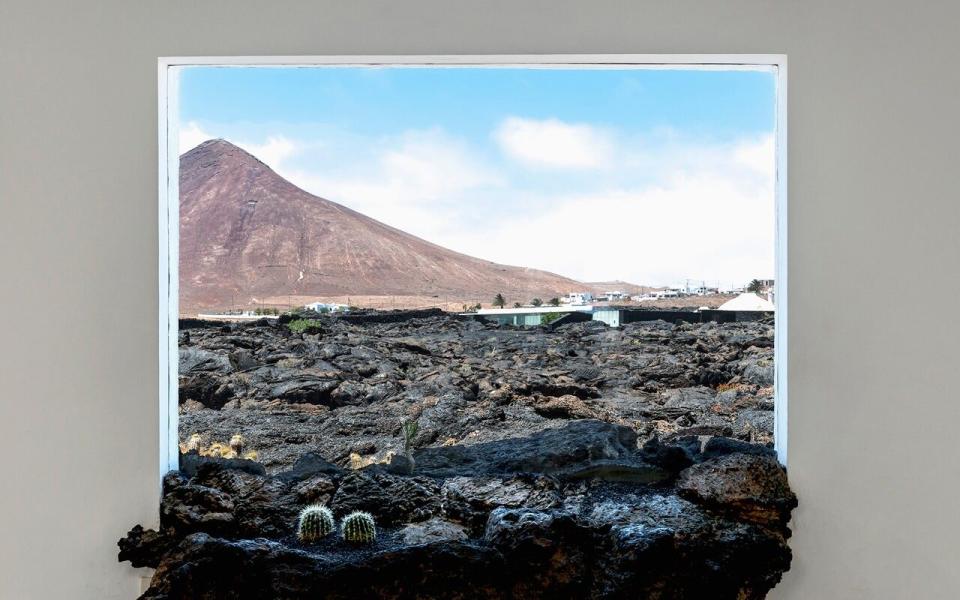
Best for end-of-the-world appeal: El Hierro
Before Columbus set sail westwards, El Hierro was the edge of the known world and the island retains an end-of-the-road feel to this day. Stroll through the highland flower meadows and dense El Pinar pine forest, swim in the rock pools at La Maceta and feast on seafood at sleepy La Restinga – you will soon slip into island time. Don’t head back before taking a hike among the wind-battered juniper trees at El Sabinar, bludgeoned by the powerful westerlies to form eerie bent-over shapes unlike anything you will have ever seen.
Stay: Hotel Puntagrande (0034 611 285 983) is a teeny adults-only bolt hole surrounded by the Atlantic waves. From £129 a night.
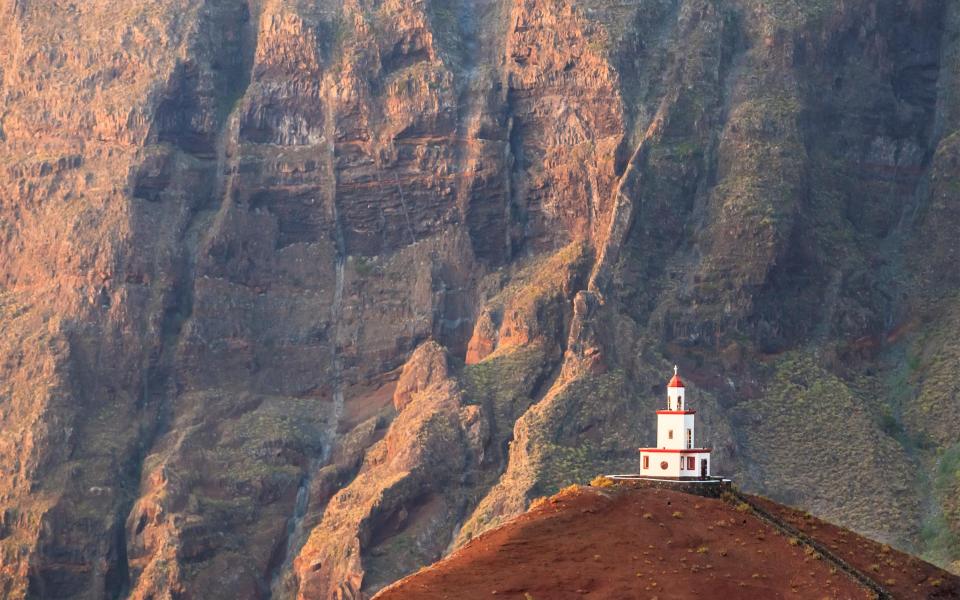
Best for a desert island escape: La Graciosa
With no cars, no flights and very few visitors, La Graciosa is the quietest Canary by far. The only way in is by a 30-minute ferry ride (€26 return; lineasromero.com). Cross the wave-rocked strait of El Río from Lanzarote, and your choice on arrival is simple: to bike or not to bike. If you choose to hire two wheels, you will get out to remote Playa de las Conchas faster, but what’s the rush? Stick to your feet and take your time instead, circling the island on dusty beach-back trails, and clambering up Montaña Bermeja for the view down its paprika-coloured slopes to the white sands and turquoise waters beyond.
Stay: Casa Lola is an ex-fishermen’s house with seafront terrace and two bedrooms. Sleeps four from airbnb.co.uk.
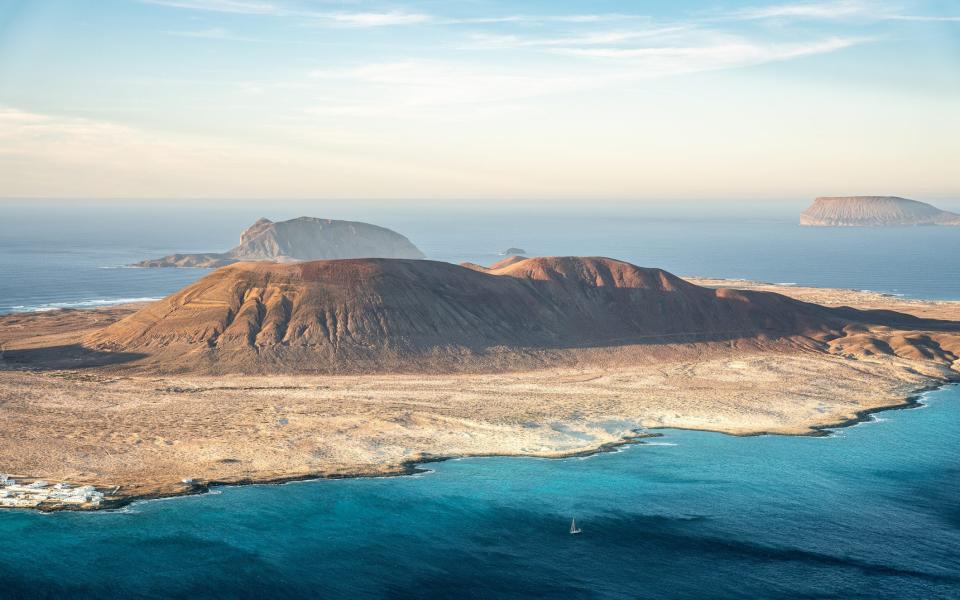
What about La Palma?
In a recent feature on La Palma, Telegraph Travel’s Chris Leadbeater wrote: “Where Tenerife (918,000 residents) and Gran Canaria (851,000) are busy pockets of humanity, La Palma, though smaller than both, is far thinner of headcount – with just 82,671 souls to its name. This translates to travel. Tenerife pulls in five million tourists a year; La Palma about 275,000. But it has never courted the package market. Only the Princess Hotel on the west coast at Las Indias, and a small range of resorts on the east coast at Los Cancajos, provide anything close to the standard Canarian seaside break, on an island where the beaches are roughshod and black-sanded.
“Instead, it revels in a different sort of beauty. Likes others in the archipelago, the island is volcanic of birth, but arguably here the geological heritage is even more on display. Maybe because it was the last to erupt – in 1971, when the Teneguia vent, in the far south, opened a vein. The lava flowed across the bottom tip of the island, leaving a hard landscape that, for all its bleakness, has a visual splendour. Most striking, perhaps, is the stubborn contrast of white and black – salt pans that harvest the easiest fruit of the ocean laid out below gloopy folds of congealed rock. Two lighthouses are stationed where these ripples reached the shore. They look like they are guarding the mouth of hell.” Read the full story.

